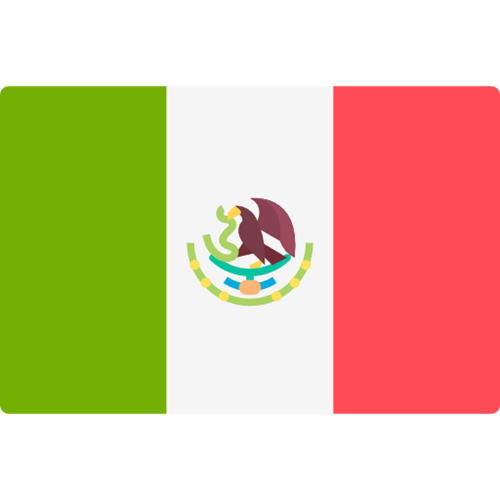Chemicals | Monthly bulletin | July 2024


Europe
New update to Candidate List of Substances of Very High Concern (SVHCs)
On the 27th of June 2024, the European Chemicals Agency (ECHA) released the new Candidate List for Substances of Very High Concern (SVHCs). With the addition of one new substance, the current list of SVHCs now contains 241 substances.
Adopted mandate for getting safe and sustainable chemicals
On the 14th of June 2024, the European Council adopted its mandate for the forthcoming negotiations with the European Parliament on the so-called ‘one substance one assessment’ (OSOA) package as part of the European Green Deal.
The ‘one substance, one assessment’ approach aims to simplify the existing legal framework on chemicals and improve the efficiency, effectiveness, coherence and transparency of safety assessments of chemicals across European Union legislation.
The OSOA package comprises the following points:
- Re-attribution of tasks to the European Chemicals Agency (ECHA).
- Enhanced cooperation among EU bodies.
- One-stop-shop for chemicals data.
The European Parliament is expected to start examining the OSOA package after the European elections.
For more information, consult the European Council website here.
Recent publications on REACH Regulation
The following table provides a non-exhaustive summary of some recent updates regarding REACH Regulation (EC) No 1907/2006:
|
Summary of the most recent updates |
||
|
Date |
Subject |
Link |
|
12/06/2024 |
The European Chemical Agency (ECHA) published the Key Areas of Regulatory Challenge report, which indicates a list of research needs and ECHA’s current priorities, along with upcoming tasks for the future.
The priorities include greater scientific research for protecting against harmful chemicals, addressing chemical pollution in the environment, shifting away from animal testing and improved availability of chemical data. |
For more information, consult the ECHA’s website here. |
|
17/06/2024 |
New REF-14 project
Affected consumer products will include hazardous mixtures present in air fresheners or electronic cigarettes.
Inspectors will check if these types of products comply with the Classification, Labelling, and Packaging (CLP) regulation, requirements for packaging and child resistant fastening, the notifications to the poison centres, and the safety data sheets of the mixtures. The REF-14 project will be prepared in 2025 and inspections are expected to commence in 2026. |
For more information, consult the ECHA’s website here. |
|
11/06/2024 |
New version of ePIC (Prior Informed Consent Regulation)
ECHA’s IT tool for submitting export and import notification has been updated.
The main updates are:
The expected date of first export needs to be at least 20 days after the resubmission. |
For more information, consult the ECHA’s website here. |
The proposed amendment to EU Detergent Regulation
In the spring of 2023, the European Commission submitted a proposal for a new regulation that is intended to replace the current regulation on detergents (EC) No. 648/2004.
On the 14th of June 2024, the European Council adopted a position on the proposal for a new detergent regulation and It provided the Council presidency with a mandate to start negotiations with the European Parliament.
The proposal is expected to be negotiated further between the European Council, the European Parliament, and the EU Commission in the autumn of 2024.
The main points of the proposal are:
- Removing outdated or redundant requirements.
- Introducing a voluntary digital labelling scheme.
- Facilitating the placing on the market of new products (i.e. detergents with micro-organisms).
- The rules for detergents sold in bulk.
- Introducing a digital product passport.
- Aligning the obligations of economic operators to the existing horizontal legislation in the chemicals sector, such as CLP regulation.
- Simplifying certain procedures such as the communication of data sheets of hazardous mixtures to poison centres.
- For products not classified as hazardous in the CLP regulation, member states will be free to decide whether this information should be provided before the product is placed on the market or not, in line with the existing rules of that member state.
For more information, consult the European Council website here.
Status of European initiatives related to chemicals
Below is a summary table with the status of these initiatives:
|
Published initiative |
Status |
|
Persistent organic pollutants – methoxychlor
The aim with this initiative is to add methoxychlor as a substance subject to certain restrictions and to amend Annex I of the Regulation (EU) 2019/1021 on persistent organic pollutants. |
The feedback period is closed and the European Commission adoption is planned for the fourth quarter of 2023. |
|
Chemical pollutants – limits and exemptions for perfluorooctanoic acid (PFOA)
This measure will postpone the date of the ban for fire-fighting foams and propose new concentration limits as an unintentional trace contaminant. |
Currently being prepared. Adoption by the Commission is planned for the third quarter of 2024. |
Vermont regulates PFAS in various consumer products
On May 30, 2024, the State of Vermont signed Senate Bill 25 into law to regulate perfluoroalkyl and polyfluoroalkyl substances (PFAS) in a variety of consumer products. The new law will become effective on July 1, 2024 with different implementation phases for each covered product category. Please see table 1 below for details of the new regulation.
Table 1:
|
Product Category |
Requirement |
Effective Date |
|
Aftermarket stain and water-resistant treatments for rugs or carpets |
Prohibited if PFAS is intentionally added |
January 1, 2026 |
|
Cookware |
||
|
Incontinency protection products |
||
|
Juvenile products |
||
|
Ski wax |
||
|
Residential rugs or carpets |
||
|
Artificial turf |
Prohibited if PFAS is intentionally added or if presence of PFAS is known or reasonably ascertainable during the manufacturing process |
January 1, 2026 |
|
Textile articles (other than outdoor apparel for severe wet conditions) |
Prohibited if PFAS is intentionally added for a functional or technical effect or over 100 ppm as measured in total organic fluorine |
January 1, 2026 |
|
Prohibited if PFAS is intentionally added for a functional or technical effect or over 50 ppm as measured in total organic fluorine |
July 1, 2027 |
|
|
Outdoor apparel for severe wet conditions |
Prohibited if PFAS is intentionally added for a functional or technical effect or over 50 ppm as measured in total organic fluorine |
July 1, 2028 |
Connecticut regulates PFAS in various consumer products
On June 5, 2024, the State of Connecticut signed SB 292 to regulate perfluoroalkyl and polyfluoroalkyl substances (PFAS) in a variety of consumer products. The new law will become effective on October 1, 2024 with different implementation phases for each covered product category. Please see table 1 below for details of the new regulation.
Table 1:
|
Product Category |
Requirement |
Effective Date |
|
Outdoor apparel for severe wet conditions |
Prohibited if intentionally added PFAS unless labeled with the statement “Made with PFAS chemicals”. |
January 1, 2026 |
|
Turnout gear (firefighter protective gear) |
Prohibited if intentionally added PFAS unless written notice to purchaser at the time of sale that product contains intentionally added PFAS and the reason it is added. |
January 1, 2026 |
|
Apparel |
|
July 1, 2026 |
|
Carpet or rug |
||
|
Cleaning product |
||
|
Cookware |
||
|
Cosmetics |
||
|
Dental floss |
||
|
Fabric treatment |
||
|
Children’s product |
||
|
Menstruation product |
||
|
Textile furnishing |
||
|
Ski wax |
||
|
Upholstered furniture |
||
|
Apparel |
Prohibited if intentionally added PFAS |
January 1, 2028 |
|
Turnout gear |
||
|
Carpet or rug |
||
|
Cleaning product |
||
|
Cookware |
||
|
Cosmetics |
||
|
Dental floss |
||
|
Fabric treatment |
||
|
Children’s product |
||
|
Menstruation product |
||
|
Textile furnishings |
||
|
Ski wax |
||
|
Upholstered furniture |
||
|
Outdoor apparel for severe wet conditions |
Rhode Island delays enforcement of PFAS in food packaging restriction
On June 17, 2024, the State of Rhode Island approved SB 2850 to further delay the effective date of the intentionally added perfluoroalkyl and polyfluoroalkyl substances (PFAS) prohibition in food packaging. The previous effective date of July 31, 2024 has been pushed back to January 1, 2025.
“Food Packaging” is defined as any package or packaging component that is applied to or in direct contact with any food or beverage.
Additionally, effective July 1, 2027, the use of a regulated chemical as a processing agent, mold release agent, or intermediate will be considered intentional introduction where the regulated chemical is detected in the final package or packaging component.
California OEHHA modifies proposed amendments to Prop 65
On October 27, 2023, California’s Office of Environmental Health Hazard Assessment issued a Notice of Proposed Rulemaking (NPR) to amend Prop 65 Article 6, Clear and Reasonable Warnings. The NPR included the following notable changes:
- Require identification of a specific chemical for which the short-form warning is being given.
- Clarify that short-form warnings may be used to provide safe harbor warnings for food products.
- Clarify existing safe harbor warning requirements for products sold on the internet and in catalogs.
- Add signal word options for food warnings.
- Add new sections 25607.50, 25607.51, 25607.52, and 25607.53 to create tailored warning methods and content for exposures to listed chemicals from passenger or off-highway vehicle parts and recreational marine vessel parts.
On June 13, 2024, in response to the public comments and to improve clarity, OEHHA issued a 15-Day Notice of Modification to Proposed Amendments with the following changes:
- Increase the time for implementation of revised short-form warning content from 2 years to 3 years;
- Revert to the original regulation text for most of the internet and catalog warning content; and
- Include a new provision to provide internet retailers a 60-day grace period, from when they receive a warning or written notice changing to the new warning content to update their online short-form warnings during the 3 year implementation period.
OEHHA is requesting comments only on the modifications to the proposed amendments until June 28, 2024.
Source:
15-Day Notice of Modification to Proposed Amendments: Modification to Proposed Amendments to Regulations Clear and Reasonable Warnings, Safe Harbor Methods and Content - OEHHA
Regulatory proposals notified to the WTO
The table below summarises the most recent notifications made to the World Trade Organization (WTO) (non-exhaustive):
|
Notification number |
Countries |
Title |
|
Switzerland |
Modification of Annexes 2 and 3 of the Ordinance on Protection against Dangerous Substances and Preparations (Chemicals Ordinance; ChemO).
The main points are:
|
|
|
Europe |
Draft Commission Regulation amending Annex XVII to Regulation (EC) No 1907/2006 of the European Parliament and of the Council as regards polycyclic aromatichydrocarbons (PAHs) in clay targets.
It would introduce a new entry 50a to Annex XVII of Regulation (EC) No 1907/2006. It would prohibit the placing on the market and use of PAHs in clay targets for shooting.
|
Sustainability, circular economy and environment
Miscellaneous technical publications relating to environmental, plastics, packaging and waste
The table below summarises the most recent publications regarding the environment, circular economy, and sustainability (non-exhaustive):
|
Entity |
Date |
Publication |
|
European Council |
24/05/2024 |
The legislative act related to the corporate sustainability due diligence directive has been adopted by the European Council. A step nearer to be published in the Official Journal of the European Union.
The directive introduces obligations for large companies regarding adverse impacts of their activities on human rights and environmental protection.
For more information, consult the European Council website here. |
|
European Council |
24/05/2024 |
The Council has adopted conclusions to boost the competitiveness of European industry.
For more information, consult the European Council website here. |
|
European Council |
27/05/2024 |
The legislative act related to the net-zero industry act has been adopted by the European Council. A step nearer to be published in the Official Journal of the European Union.
The regulation aims to boost the industrial deployment of net-zero technologies.
For more information, consult the European Council website here. |
|
European Council |
17/06/2024 |
The regulation on nature restoration has been adopted by the European Council.
This law aims to put measures in place to restore at least 20% of the EU’s land and sea areas by 2030, and all ecosystems in need of restoration by 2050. It will now be published in the EU’s Official Journal and enter into force. It will become directly applicable across all member states. |
|
European Council |
17/06/2024 |
The Council adopted its position (‘general approach’) on the green claims directive, which aims to address greenwashing and help consumers make truly greener decisions when buying a product or using a service.
Negotiations are expected to begin in the new legislative cycle. |
|
European Commission |
05/07/2024 |
EU environmental law – 2025 implementation review
This European initiative:
The call for evidence is closed and adoption by the Commission is planned for the second quarter of 2025. |
|
The Minister of Ecological Transition and Territorial Cohesion |
03/07/2024 |
Fight against plastic pollution
It publishes information about the anti-waste law for a circular economy set (AGEC Law) and single-use plastic packaging. The aim is the end of the marketing of these products by 2040. Furthermore, certain single-use plastic products are already banned and others will be progressively banned in the following years. |
|
European Commission |
12/07/2024 |
This European initiative will align EU legislation with the relevant Conference of the Parties (CoP) decisions.
The call for evidence is closed and adoption by the Commission is planned for the second quarter of 2024. |
















































